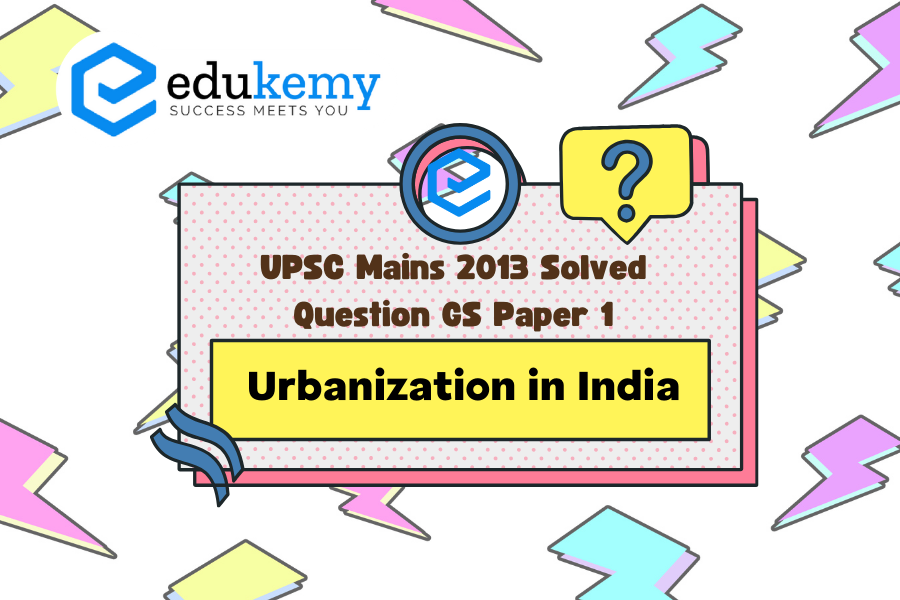Urbanization in India has surged at an unprecedented pace, bringing forth a myriad of social issues that have become intrinsic to the urban landscape. As rural populations migrate to urban centers in search of better opportunities, they encounter a host of challenges that stem from the rapid transformation of their living environments. One prominent issue is the strain on infrastructure and resources, as burgeoning cities struggle to accommodate the influx of inhabitants. This leads to inadequate housing, sanitation, and transportation facilities, exacerbating living conditions for many urban dwellers. Additionally, the disparity between rich and poor widens, with slums juxtaposed against luxurious high-rise apartments, highlighting socioeconomic inequalities. The rise of informal settlements further underscores the failure of urban planning and governance to address the needs of all citizens equitably. Furthermore, urbanization catalyzes environmental degradation, as increased pollution and depletion of natural resources pose significant health risks and threaten the sustainability of urban ecosystems. Moreover, rapid urbanization often leads to the disintegration of traditional social structures and values, fostering alienation and social unrest among marginalized communities. In essence, the speedy process of urbanization in India has spawned a complex web of social problems that necessitate holistic interventions for sustainable urban development.
Tags: Urbanization, their problems, and their remedies.
Contents
Decoding the Question::
- In Introduction, try to provide the definition of urbanization.
- In Body, discuss the problems and issues regarding urbanization.
- In Conclusion, try to draw a summary with the help of some statistics which could help solve the problem.
Answer:
Urbanization is the process of society’s transformation from a predominantly rural to a predominantly urban population. In India, over 35% of the population lives in urban areas, and by 2030, over 50% of India’s population is expected to live in urban areas.

Social Problems Originated out of the Speedy Process of Urbanization:
In India, urbanization is unplanned due to uncontrolled migration. Due to unplanned urbanization, India faces many problems such as unemployment, electricity problems, pollution, social problems, improper sanitation facilities, etc. The rapid rise in the urban population in India leads to various problems like increasing slums, the decreased standard of living in urban areas and causing environmental damage.
- Overcrowding: In India, many metropolitan cities like Delhi, Mumbai, and Bangalore are suffering from the problem of overcrowding.
- Slum: 5 crores of Indians live in slums, leading to social and economic exclusion
- Unemployment: According to the National Statistical Office (NSO), India’s unemployment rate was 3% in urban areas in 2021.
- Higher Rates of Urban Crime: With the increase in urbanization, the problem of crime also increases. Fringe areas of most cities are the breeding ground for Metropolitan cities like Delhi, Mumbai, and Bengaluru have accounted for 16.2, 9.5, and 8.1 per cent respectively of the total crime reported from 35 megacities of India.
- Poverty: Today, roughly one-third of the urban population lives below the poverty line. There are apparent disparities between haves and have-nots in urban areas. The most demanding of the urban challenges unquestionably is the challenge posed by poverty, reducing exploitation, relieving misery, and creating a more human condition for the urban poor.
- Transport: As income is rising, individuals are buying more private vehicles and using less public transport. Such a massive number of vehicles in cities is causing more traffic jams, which decreases the efficiency of public transportation. Also, the perception of public transport is less, which makes people use private vehicles. Public transport is less disabled-friendly. There is also a lack of infrastructure and poor maintenance of existing public transport infrastructure.
- Urban Crimes: Modem cities manifest a meeting point of people from different walks of life having no affinity with one another. Like other problems, the problem of crimes grows with the increase in urbanization. The increasing trend in urban crimes tends to disrupt the peace and tranquility of the cities and make them unsafe to live in, particularly for women.
The urban population of India had already crossed the 285 million mark by 2001. By 2030, more than 50 per cent of India’s population is expected to live in urban areas. Poverty, unemployment, and underemployment among rural immigrants, beggars, thieves, burglaries, and other social evils are on the rampage. Urbanization is the physical expansion of urban areas because of rural migration, and it is closely linked to industrialization, modernization, and the sociological process of rationalization. Therefore, a new urbanization policy, empowering the Urban Local Bodies, and reforming the land policy adequately address these issues.
In case you still have your doubts, contact us on 9811333901.
For UPSC Prelims Resources, Click here
For Daily Updates and Study Material:
Join our Telegram Channel – Edukemy for IAS
- 1. Learn through Videos – here
- 2. Be Exam Ready by Practicing Daily MCQs – here
- 3. Daily Newsletter – Get all your Current Affairs Covered – here
- 4. Mains Answer Writing Practice – here


